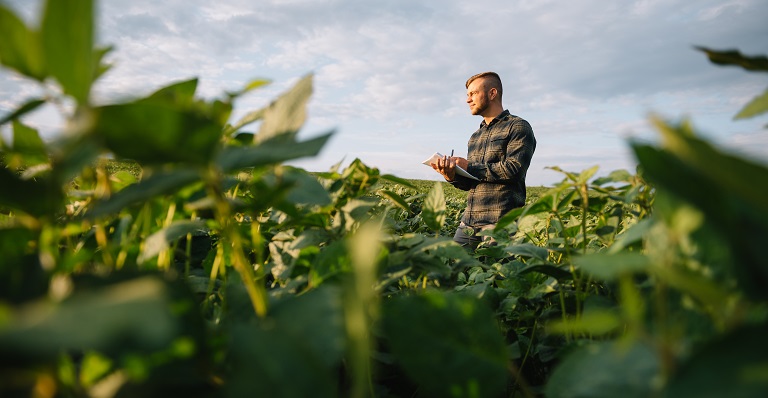Food producers, like all other industries, have been hugely affected by COVID-19. Unlike other industries, the overall effect on the food industry has been very positive. In fact, in the early going it was hard for many in the industry to keep up with demand. It seems like a nice problem to have, and is certainly much better than the alternative. Will it all settle down once the world gets back to a more normal state, or will COVID-19 have more permanent effects on Canada’s food industry?
First off, let’s be clear about one thing. There’s a stark difference in food industry fortunes between the goods and service sectors. Physical flows of goods have been strong, in great part because panic-buying in the early lockdown phase created a run on supplies that never really abated. It seems many of us simultaneously stocked up our pantries with all the essentials. Moreover, in June, retail sales of food and beverages are estimated to still be at 106% of pre-COVID-19 levels.
Export data seem to indicate that Canada wasn’t alone. Shipments of food surged in March and April, and although they levelled off in May and June, have maintained a pace that’s 16% above pre-pandemic levels. Like the domestic Canadian sales, these numbers show no sign of abating; relaxing of COVID-19 restrictions hasn’t, for the time being, returned domestic or international sales back to more normal trend levels.
Things could hardly be more different in food services. One look at the GDP data by industry tells the tale: agriculture has barely been affected, food retailing is soaring, food exports are doing even better. Swing over to services, and the opposite is true. May data put activity levels in accommodation and food down 58% from the pre-COVID-19 peak, and the estimate for June is little better. The crash in business and personal tourism is a huge part of this carnage, but dining out locally also disappeared almost overnight. As social distancing is putting strict limits on restaurant capacity, food services are looking at a slow recovery.
Even so, on balance demand is positive, which says a lot about how the world has radically adapted its crisis-approach to food. The question is, will some of these changes end as the pandemic abates, or can we expect that some of the adjustments are here to stay? This is a critical question for all industries, but maybe food is a bellwether for the others.
The near-instant, planetwide securing of food supplies has made crystal clear the dependencies and vulnerabilities that existed in global food supply chains. Industries and policymakers together want to ensure that these are fixed, both quickly and permanently. Nations with net dependence on the rest of the world for food will doubtless try to reduce that dependence by beefing up local production. Those with increasing net dependence have to go further, securing their foreign supply chains as much as possible.
Net-producer nations like Canada are at a clear advantage. Securing domestic supplies has increased the incentive to produce and process more food at source. Investing in more local food processing just got a lot more attractive. At the same time, the need of foreign customers to secure international supply chains has upped the ante on Canada’s distribution system: ensuring competitive and reliable food trade infrastructure, important before the crisis, is now much more so.
Pressures on the global food supply were quite tight before the pandemic. As such, the current crisis increases the urgency of strengthening the existing system, and accelerates the processes that optimize current global food production and the optimization of scarce resources. Emphasis on environmental sustainability will likely boost demand for natural and organic products. Moreover, land-use optimization will no doubt further bolster global demand for plant-based protein alternatives, dairy substitutes and the like.
Given food’s foundational place in the hierarchy of human needs, if permanent post-pandemic industrial change happens anywhere, it’s likely to happen first in food. Other industries will likely look to this one for guidance on how to re-shore, near-shore and glocalize appropriately, all the while strengthening supply chains to avert future disruption as much as possible.
The bottom line?
COVID-19 has forced radical adjustment on the global food sector. Rapid adaptation has enabled the food industry to adjust, meet new demands and increase overall production amid the crisis—even as the food service industry has been decimated. Its resilience is a lesson to all other industries—and a signal that change isn’t necessarily over. This is an industry to watch. For more details, see our new agri-food sector report.
This commentary is presented for informational purposes only. It’s not intended to be a comprehensive or detailed statement on any subject and no representations or warranties, express or implied, are made as to its accuracy, timeliness or completeness. Nothing in this commentary is intended to provide financial, legal, accounting or tax advice nor should it be relied upon. EDC nor the author is liable whatsoever for any loss or damage caused by, or resulting from, any use of or any inaccuracies, errors or omissions in the information provided.






